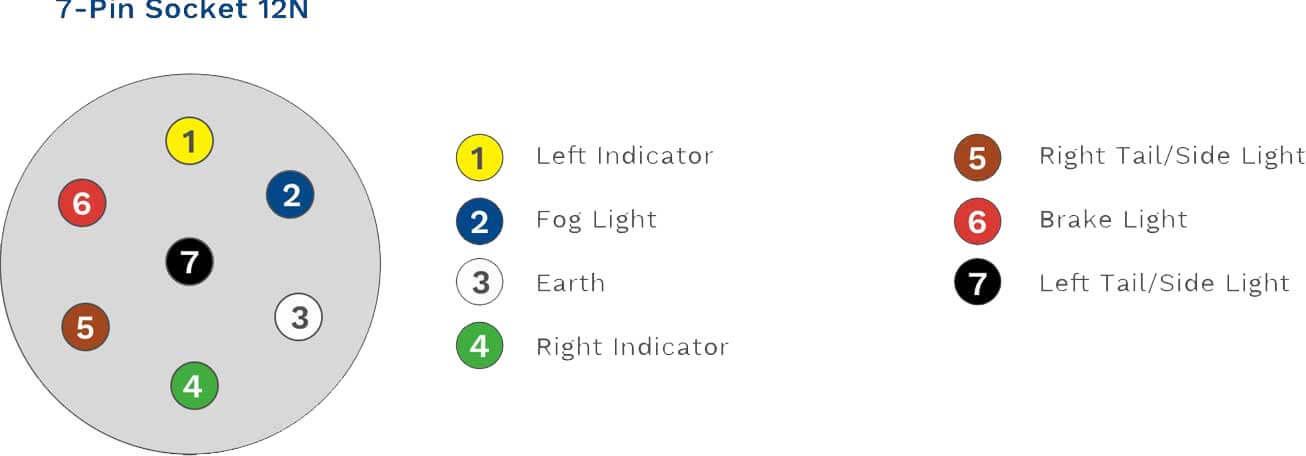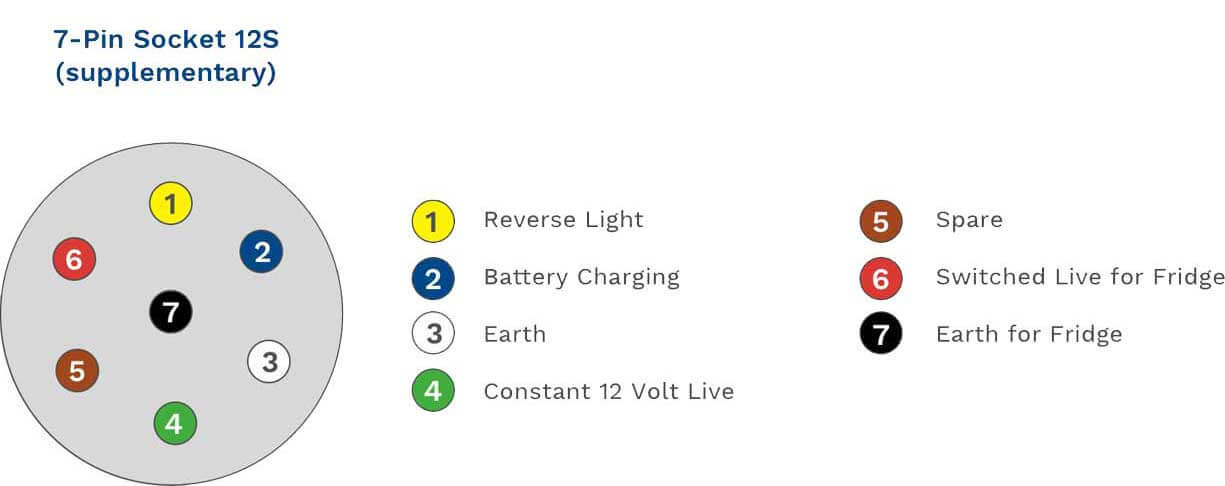The Complete Guide to Towbars
If you're new to the world of towing then choosing the right towbar for your vehicle can be a bit of a daunting experience. Do you go for a flange or swan neck towbar? Is a fixed or detachable towbar right for your vehicle? And what is the difference between a towbar and a towball? All questions that will no doubt overwhelm a towbar beginner.
That's why here at Witter Towbars we've decided to put together this simple, step by step guide to understanding the different types of towbars on offer.
Towbar Overview
Detachable Flange Towbar
The Witter detachable flange towbar offers you all the versatility of the traditional flange version while only a small part of the towbar remains visible when detached. This towbar can be easily detached when not towing.
Advantages
- Tow and carry cycles at the same time
- The towball is removed when not in use preserving 'shins'
- AL-KO towballs can be fitted
- Won't trigger reversing sensors when not towing
- A choice of towing couplings and accessories can be fitted
Disadvantages
- Generally one of the most expensive types of towbars
- Some people believe the design of this towbar to be quite ugly
Fixed Swan Neck Towbar
The Witter Fixed Swan towbar is ideal for many towing applications and offers a slim, unobtrusive appearance.
Advantages
- Compatible with AL-KO stabilisers
- Less likely to trigger reversing sensors
- More aesthetically pleasing than a flange towbar
Disadvantages
- Towball height cannot be altered
- Slightly more expensive than the flange towbar
- Cannot be fitted with a bumper shield
Detachable Swan Neck Towbar
The Witter detachable swan neck towbar is slim, secure and simple to use. When detached only a small part of the towbar remains visible.
Advantages
- Compatible with AL-KO stabilisers
- Less likely to trigger reversing sensors
- More aesthetically pleasing than a flange towbar
Disadvantages
- Towball height cannot be altered
- Slightly more expensive than the flange towbar
- Cannot be fitted with a bumper shield
Types of Towbar
What is a Flange Towbar?
This towbar is bolted with 2 or 4 bolts to a flange plate. The flange plate is then fitted to the underside of the vehicle. This is considered to be an ugly design because of the visible bolts and components on display.
What is a Swan Neck Towbar?
The swan neck towbar refers to the actual shape and design of the towbar. This towbar is fixed directly to the underside of your vehicle and uses a ‘swan neck’ design to offer an unobtrusive appearance.
What is a Fixed Towbar?
As the name suggests, a fixed towbar cannot be removed easily from your vehicle. Fixed towbars are available in both swan neck and flange design.
What is a Detachable Towbar?
Again, as the name suggests, a detachable towbar can be removed easily from your vehicle. It uses a quick release handle to allow quick and straightforward detachment.
Towbar Electrics
Once you've found the right towbar, then it is a case of deciding which electrics are best for your car and your towing needs. In this section we will look at dedicated kits, universal kits, 7-pin electrics, 7-pin twin electrics and 13-pin electrics.
Do I need electrics for my towbar?
Yes, you will need electrics for your towbar. Anybody who fits a towbar to your vehicle without an electric kit is breaking the law. Here at Witter Towbars, we would never fit a towbar without an electric kit.
What are the electrics used for?
They connect the electric system in your car to the electric system on either a caravan, trailer or cycle carrier. As stated above, it is a requirement by law to have an electrical kit fitted with your towbar. The reason this is a legal requirement is because the electric kit syncs the safety features in your car with the electrics in a caravan, trailer or cycle carrier.
Should I buy a dedicated or universal electric kit?
It is possible that there will be a universal or a dedicated unit available to fit to your vehicle. Due to modern vehicles having such complex wiring systems, we always suggest that you go with a dedicated kit. Dedicated kits are specifically designed to sync the safety features in your car with the electrics in your caravan. This could be a lifesaving piece of equipment. Although they are more expensive than the universal kits, buying a dedicated kit allows you to avoid all the hassle of a universal kit.
You then have the choice between 7-pin, 7-pin twin or 13-pin electrics; again the choice is down to your towing needs, so read the guide below to help you pick which electrics are best suited to your vehicle.
7-Pin Electrics
This is the most common and cheapest connector type currently used in the UK. It will fulfil all normal towing requirements under UK law and it can be used with lighting boards, cycle carriers, old caravans, garden trailers, plant trailers and horseboxes. In fact, almost anything you can connect to a towbar. A 7-pin electric kit will not power the inside of your caravan.
What Can You Power with 7-Pin Electrics?
Lights on a caravan, trailer or cycle carrier (indicator, fog lights, brake lights)
What Cannot be Powered with 7-Pin Electrics?
Interior appliances of a caravan (fridge, caravan battery) Reverse lights (caravan, cycle carrier, trailer)

7-Pin Twin Electrics
These sockets are usually fitted in addition to the single 7-pin electrics. Providing electric to both the exterior and interior of a caravan, this is the ideal electrical socket when you wish to charge the caravan battery or power the fridge in a caravan built before 2008.
What Can You Power with 7-Pin Twin Electrics?
Lights on a caravan, trailer or cycle carrier (indicator, fog lights, brake lights) Interior appliances of a caravan (fridge, caravan battery) Reverse lights (caravan, cycle carrier, trailer)
What Cannot be Powered with 7-Pin Twin Electrics?
N/A


13-Pin Electrics
The modern socket type on the market, the 13-pin socket is ideal for all your towing needs. Powering the lights on a caravan, trailer or cycle carrier, a 13-pin socket can also provide power to the inside of your caravan. All UK caravans manufactured after 2008 will have a 13-pin connector as standard.
What Can You Power with 13-Pin Twin Electrics?
Lights on a caravan, trailer or cycle carrier (indicator, fog lights, brake lights) Interior appliances of a caravan (fridge, caravan battery) Reverse lights (caravan, cycle carrier, trailer)
What Cannot be Powered with 13-Pin Twin Electrics?
N/A

Towbar Fitting
Once you've figured out which towbar and which electric kit you want from the selection available for your vehicle, you're ready to purchase a towbar. Our website offers you a simple process for getting your order started with the towbar and fitting all-in-one package. Find your towbar with our number plate tool or select from our drop-down menu here.
How much does it cost to fit a towbar?
The great thing about buying a towbar with Witter is our huge network of approved fitters. With over 60 years of experience going into engineering our towbars, we only work with the very best to fit them. That’s why we include the cost of fitting a towbar within the price of buying the actual towbar. Not only does that ensure you have a legally fitted towbar, but it also allows you to relax knowing that your towbar is fitted by an experienced, verified professional.
Can I fit a towbar myself?
Of course, you could fit a towbar yourself. But why would you? Towing is a serious business that, when done incorrectly, can endanger your life and the lives of others around you. That’s why we offer an all-in-one fitting service. We have spent many years designing quality, safe towbars. We want to ensure the people who buy our towbars use them in the safest manner possible. That’s why we encourage you to buy a towbar from us and enjoy peace of mind with our free fitting service carried out by experienced professionals.
Can fitting a towbar affect my insurance?
In insurance terms, fitting a towbar is classified as a car modification. Therefore, it is imperative that you notify your insurance provider about this change to your vehicle. Car modifications can affect how your insurance premium is calculated and, if you don’t tell your insurance provider, they may use the modification to invalidate your policy in the event of an insurance claim. Always notify your insurance provider when fitting a towbar.
